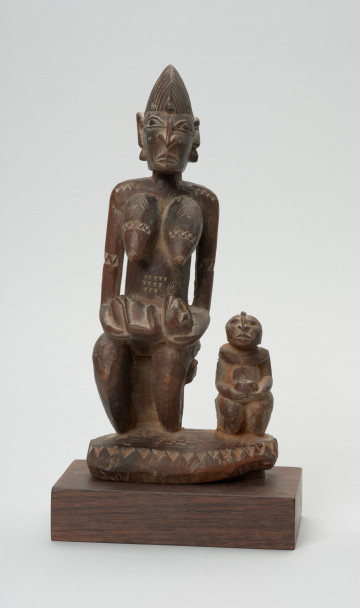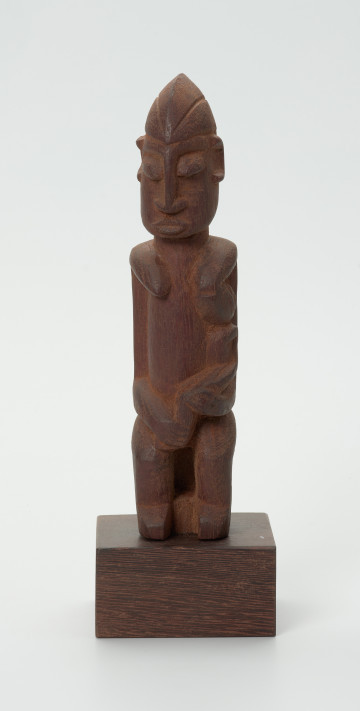
Figure - woman with child
między 1951 — 2000
National Museum in Szczecin
Part of the collection: Collection of Dogonian art
The figurine represents calao, the hornbill (Bucerotidae). On the African continent, there are 24 species of the bird. Some of them live in open spaces, savannas and bushlands, others prefer dense forests.Hornbills are characterised by heavy beaks useful in fighting, hunting, feather cleaning and nest building, but they owe their name to specific growths. They eat in an unusual way, their tongues are too short to rotate the food held in their beaks, so they put each bite into the oesophagus by rapidly tilting their heads. The movement forced by the way of feeding causes that the bird is often seen with its beak pointing vertically upwards, which many African peoples interpret as a sign of constant contact and communication with the Supreme Being residing in the sky. For this reason, hornbills have always been respected and valued. In West Africa, however, more importance is attached to the dedication with which the male and female calao lay their eggs and look after the chicks. Hornbills build nests which the female does not leave not only while the eggs are being laid, but long after the young have hatched. She allows herself to be walled up by the male in the nest. There is only a tiny opening, through which the male provides her with food. The permanent presence of the female in the nest is the best defence against predators. However, the burden of feeding the whole family falls on the male. This is so exhausting that he often dies of exhaustion. This sacrifice on the part of both the female and the male hornbill is generally admired in West Africa and for many peoples of this part of the Black Land the calao is the symbol of the ideal parent.
Ewa Prądzyńska
Author / creator
Dimensions
cały obiekt: height: 18 cm, width: 3,5 cm
Object type
figure
Creation time / dating
Creation / finding place
Identification number
Location / status

między 1951 — 2000
National Museum in Szczecin

między 1951 — 2000
National Museum in Szczecin

między 1951 — 2000
National Museum in Szczecin
DISCOVER this TOPIC
National Museum in Lublin
DISCOVER this PATH
Educational path